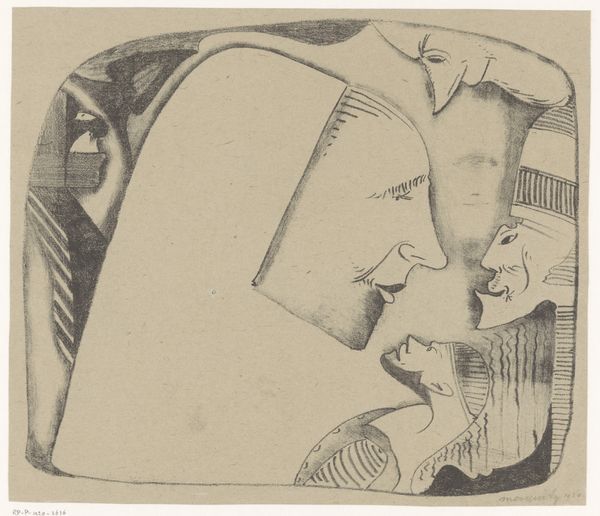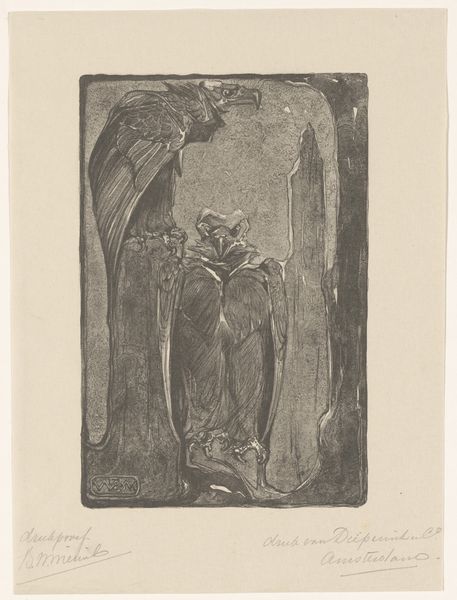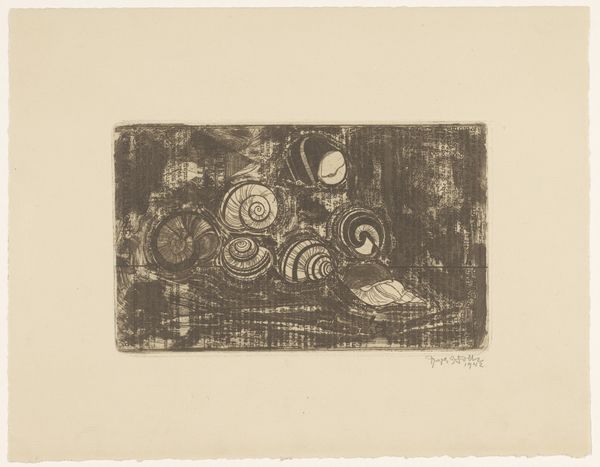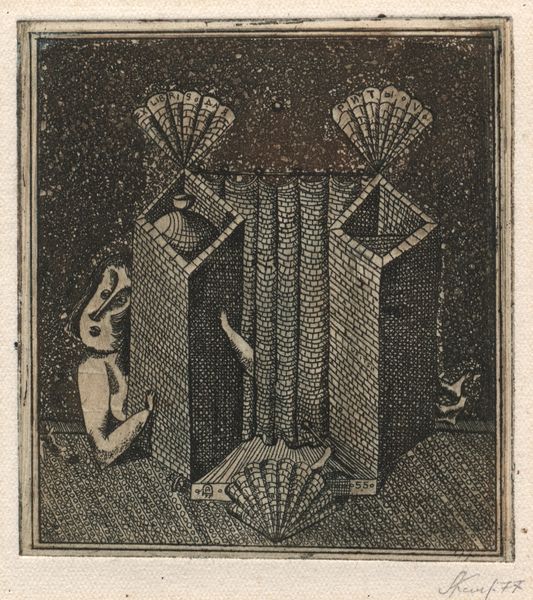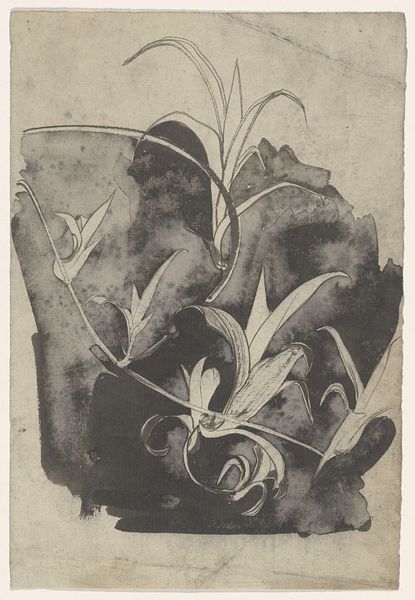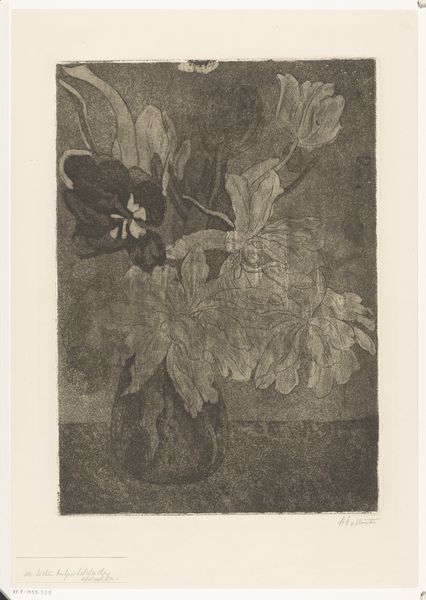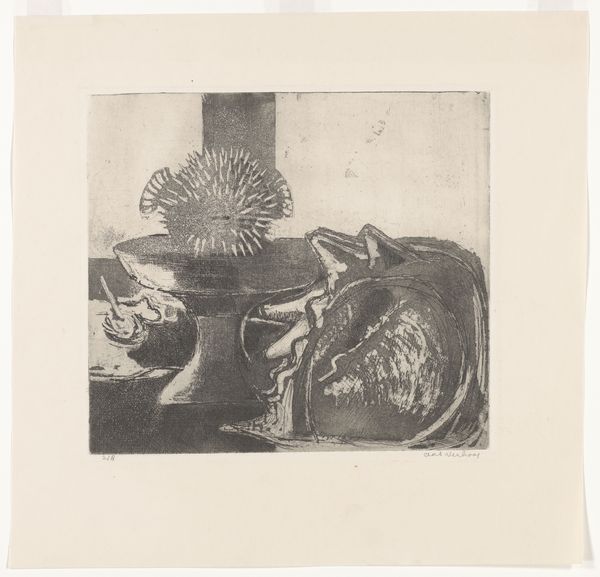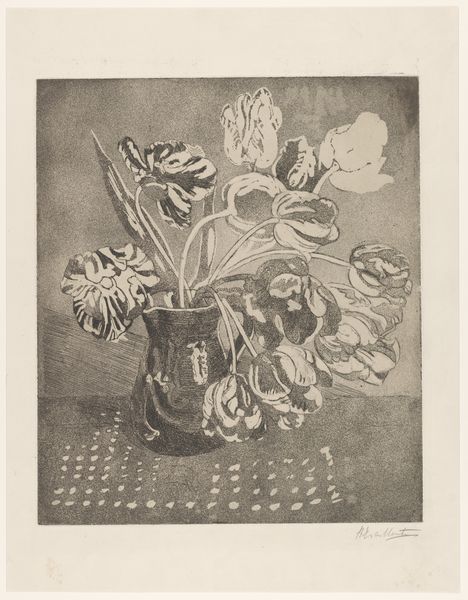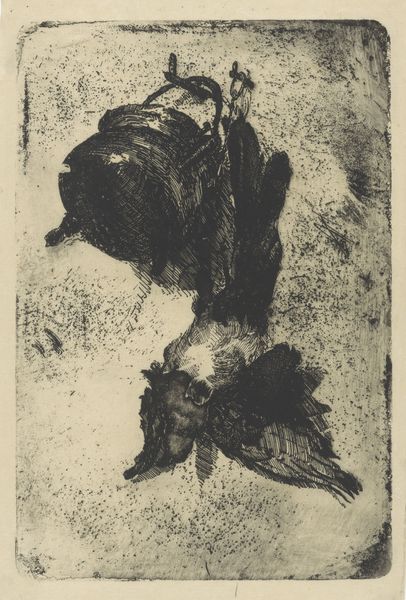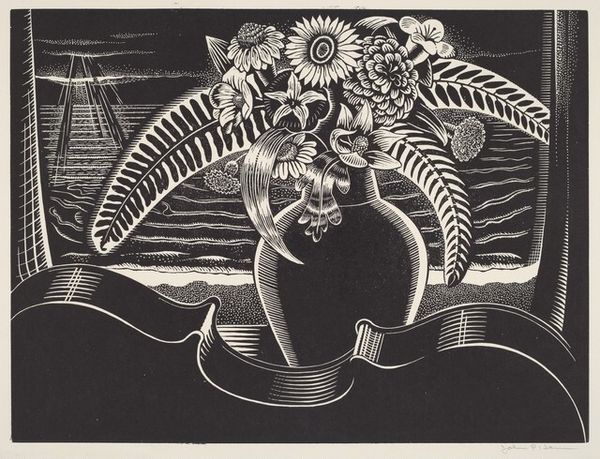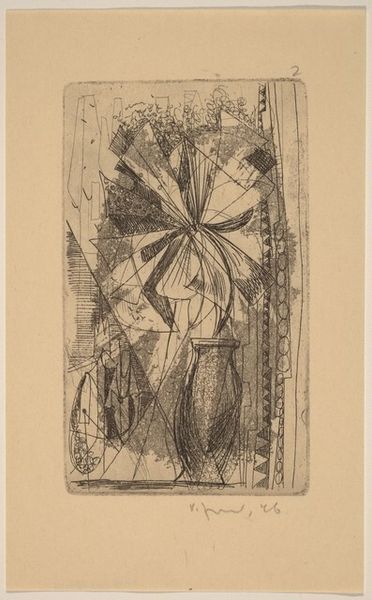
drawing, print, pencil, graphite
#
pencil drawn
#
drawing
#
toned paper
#
dutch-golden-age
# print
#
pencil sketch
#
pencil drawing
#
geometric
#
pencil
#
symbolism
#
graphite
Dimensions: height 245 mm, width 288 mm
Copyright: Rijks Museum: Open Domain
Curator: Here we have "Bladbegonia", a pencil drawing created around 1920 by Samuel Jessurun de Mesquita, currently residing in the Rijksmuseum. It's rendered on a toned paper. What catches your eye about this piece? Editor: Immediately, I'm struck by how monumental it feels, yet it's a humble pencil sketch! There's a certain darkness, a moodiness. It reminds me of old botanical illustrations, but imbued with a kind of graphic drama. Curator: You know, it’s interesting that you mention botanical illustrations. While the plant itself appears quite representational at first glance, Mesquita wasn’t necessarily interested in scientific accuracy. The emphasis, as the Rijksmuseum suggests, seems to be more on the pattern and design of the plant’s forms. Editor: Absolutely. The repetition of geometric shapes, the lines… It’s almost hypnotic. Is it a begonia, or is it a study in form? Maybe both! Also the woven plant pot looks like an animalistic figure looking up toward this massive plant. Curator: Indeed. He was also drawn to more stylized, sometimes almost fantastical, representations of nature later in his life. In some ways it foreshadows his later exploration of animal forms in printmaking. And thinking of pattern and design, let's also acknowledge Mesquita's style rooted in symbolism with influences from the Dutch Golden Age. Editor: Ah, yes! The Symbolism adds another layer. The play of light and shadow, the somewhat abstracted form… is this the humble begonia, or some sort of coded message about growth, decay, the cyclical nature of life? Curator: The sheer graphic nature feels very contemporary. Its high-contrast almost anticipates op art. And tragically, he and his family would perish during the Holocaust only two decades later. It imbues it with a ghostly presence to my eye. Editor: That's so tragic, and lends another shadow of contemplation, doesn't it? A still life, made lively through its geometric energy and stark visual language. It's as if the plant itself is silently witnessing, enduring. Curator: Perhaps this “Bladbegonia” represents our fragile but enduring capacity for creative expression amid harsh conditions, but who can really say? We are only left with what the work itself speaks. Editor: Beautifully put.
Comments
No comments
Be the first to comment and join the conversation on the ultimate creative platform.

